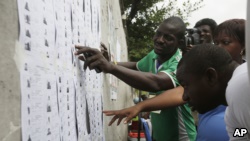North Korea defied U.N. resolutions by firing a medium-range ballistic missile into the sea on Friday
TV screen showing a file footage of the missile
launch conducted by North Korea, at Seoul Railway
Station.
North Korea defied U.N. resolutions by firing a
medium-range ballistic missile into the sea on
Friday, Seoul and Washington officials said, days
after its leader Kim Jong Un ordered weapons tests
linked to its pursuit of a long-range nuclear missile
capable of reaching the U.S. mainland.
South Korea’s Joint Chiefs of Staff said in a
statement that the missile fired from a site north of
Pyongyang flew about 800 kilometers (500 miles)
before crashing off the North’s east coast.
The Joint Chiefs of Staff said it wasn’t known what
type of missile was fired, but a South Korean
defense official, requesting anonymity citing
department rules, said it is the first medium-range
missile launched by the North since April 2014
when it fired two.
A senior U.S. defense official said the Pentagon can
confirm the missile launch, saying it appears to be
a Rodong missile fired from a road-mobile
launcher. The official said the test violated multiple
U.N. Security Council resolutions that ban North
Korea from engaging in any ballistic and nuclear
activities. The official spoke on condition of
anonymity because he was not authorized to
discuss the matter publicly.
South Korea’s Joint Chiefs of Staff said later Friday
its surveillance equipment detected the trajectory
of a suspected second missile fired from a site
where the North’s confirmed first launch occurred.
A Joint Chiefs of Staff statement said the object
later disappeared from South Korean radar at an
altitude of 17 kilometers (10 miles) and that it was
trying to find out if a missile had been fired or
something else was captured by the radar.
Friday’s launch came as North Korea reacts to
ongoing annual South Korean—U.S. military drills
that it sees as an invasion rehearsal. The drills are
the largest ever, in response to the North’s nuclear
test and long—range rocket launch earlier this year.
In recent weeks, North Korea threatened pre-
emptive nuclear strikes against Washington and
Seoul and test-fired short-range missiles and
artillery into the sea in response to tough U.N.
sanctions imposed over its nuclear test and rocket
launch. The North says it needs nuclear weapons to
cope with what it calls U.S. military threats.
On Tuesday, North Korea’s state media said Kim
had ordered tests soon of a nuclear warhead and
ballistic missiles capable of carrying warheads. Kim
issued that order while overseeing a successful
simulated test of a re-entry vehicle aimed at
returning a nuclear warhead into the atmosphere
from space so it could hit its intended target,
according to the North’s Korean Central News
Agency.
Taewoo Kim, a military expert at the South’s
Konyang University, said it is likely that Friday’s
launch was a test of a re-entry vehicle.
Some analysts had earlier predicted the North
might fire a missile carrying an empty warhead,
which contain trigger devices but lack plutonium or
uranium, to see if those warhead’s parts can
survive the high pressure and temperatures upon
re-entry into the atmosphere and if they could
detonate at the right time.
Outside experts said it is a key remaining
technology that North Korea must master to
achieve its goal of developing a long-range missile
capable of hitting the U.S. mainland. South Korean
defense officials said earlier this week that North
Korea had yet to develop the re-entry technology,
so it still does not have a functioning
intercontinental ballistic missile.
It was not clear if Friday’s launch was meant to test
a re-entry vehicle or other weapons technologies or
was just intended as a show of force against
Washington and Seoul.
The South Korean defense official said Seoul has no
immediate plans to try to retrieve debris of the
missile that appeared to have landed in the waters
side Japan’s air defense identification zone. He said
South Korea did not retrieve missile parts after the
North’s 2014 launches.
North Korea is thought to have a small arsenal of
atomic bombs, but South Korean officials and many
outside experts say they are not small enough to
place on missiles that can strike faraway targets.
Analyst Lee Choon Geun at South Korea’s state-
funded Science and Technology Policy Institute said
the North can probably place nuclear warheads on
its shorter-range Scuds and medium-range Rodong
missiles, which would put South Korea and Japan
under its striking range. Other analysts question
that.
The North began to develop ballistic missiles in the
1970s by reverse-engineering Soviet-made Scuds it
acquired from Egypt. After several failures it put its
first satellite into space aboard a long-range rocket
launched in December 2012. Its second successful
satellite launch occurred this February. The U.N.,
the U.S. and others say the launches were a banned
test of missile technology. Ballistic missiles and
rockets used for satellite launches share similar
bodies, engines and other technology.
Experts say a militarized version of the rocket the
North used to put its second satellite into orbit in
February would potentially have the range to reach
the U.S. mainland. However, there are questions as
none of North Korea’s possible candidates for an
intercontinental ballistic missile have been tested
“end-to-end,” from launch through re-entry and
warhead delivery, to show they actually work.
The Korean Peninsula officially remains in a state of
war as the 1950-53 Korean War ended with an
armistice, not a peace treaty. The U.S. deploys
about 28,500 troops in South Korea as deterrence
against potential aggression from North Korea.



Comments
Post a Comment